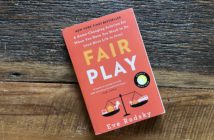In spring, my news feeds are awash with gardening top-ten lists and how-to tips and tricks, running the gamut from when to pinch off your seedlings to easier ways to thin carrot patches. All of them inspire me to run to my local garden center to blanket my garden in blooms and vegetable bounty, but rarely have I seen a list of how to garden when facing mobility and pain issues.
Over the last four years I’ve had to greatly modify my approach and expectations towards my yearly garden plan as my rheumatoid arthritis and ankylosing spondylitis have advanced, but I have grown to accept and modify my techniques so that when spring arrives, I am best able to relish my garden rather than resent what I am unable to achieve.
Below are my top five tried-and-true methods for gardening successfully with chronic pain, mobility issues, and illness. I hope these tips and tricks empower you to get some dirt time and enjoy the growing season however you are best able.
Plan and Project Manage
I have found the best tool in my gardening toolbox is project management.
Starting in the spring, I keep a gardening journal as well as a calendar with all the dates and tasks related to achieving my yearly gardening goals, making note of important dates as well as how long each related gardening task will take to accomplish.
Not wanting to push myself too hard and end up in bed with high pain, I am realistic about my gardening goals and create a detailed plan to accomplish every step. I make room for the tasks that take the most energy, sometimes giving each task its own day, sustainably intermingled with tasks that are less taxing.
Never underestimate how helpful the staff of your local garden center will be with your garden’s project management. Bring your gardening journal and calendar along with your big ideas, and reap all the benefits of their years of experience growing in your area.
Ask for Help
Asking for help is an essential part of your garden plan, especially for heavy lifting, weeding, transplanting, or any activity that exacerbates your symptoms or pain. If you harbor guilt about asking for help, you can end up not starting a project at all.
If you are experiencing guilt, brainstorm creative ways to barter for help that will let you punch fear in the face to ask for what you need. You’d be surprised how much help and support a loaf of banana bread and gratitude will get you.
Remember, it is much less overwhelming for you and the person you are asking for help if you have a clear and focused garden plan. Keeping a gardening calendar ensures you will be able to ask for very specific levels of help on specific days and times.
Accommodate Yourself
Gardening, from a window box to a half acre plot, is physically demanding, therefore it is necessary to garden intentionally and with all necessary mobility aids at your disposal.
For example, I garden in a huge sunhat and sunglasses, in long sleeves with compression gloves, and elbow, ankle, and knee braces. As much as possible I garden sitting on a memory foam pad instead of kneeling so as to not bend over or stress out my joints. I always have a lightweight step stool next to me to help me get up and down, and to sit at various levels. When potting plants, I do so at a table with all of my tools, my dirt, and my plants at the same height, with a chair ready if I need to sit and rest.
Take breaks, plan to rest, and hydrate. If you are exhausting yourself and not enjoying yourself, then plan to reevaluate your garden project and make a note for the following year.
Think Inside the Box!
Before my diseases advanced to where they are today, I used to have a community garden allotment I adored. I grew bumper crops of produce as well as cut flowers there until I had to be honest with myself that it was far too much for my body to maintain. Letting go of that plot was a huge loss and I was quite resentful, until a friend reminded me that all I needed was dirt to be a gardener. That is when I first started thinking outside the plot and inside the box!
Even if your current state of health doesn’t afford you the freedom of gardening a patch of earth or landscaping your yard, do not rule out:
- Flowerboxes
- Container gardens
- Forcing bulbs indoors
- Terrariums
- Cactus & house plants
- Sprouting seeds & growing windowsill herbs and lettuce
Be Kind To Yourself
For me, gardening is a form of self-care, and I strive to be kind to myself while enjoying every step of the growing season.
On really bad days when I wish to be in the garden but can’t, I will go to the library and pilfer their gardening section for beautiful coffee table books or re-read anything by Beverly Nicolas. I watch a gardening-themed show on TV or on YouTube, and I follow numerous gardeners on Instagram and delight in watching their gardens take shape each season.
It is frustrating to live in a body I do not have control of, but I when I need to surrender to what is best for my health, delighting in others’ gardens brings me as much joy as does working in my own.




